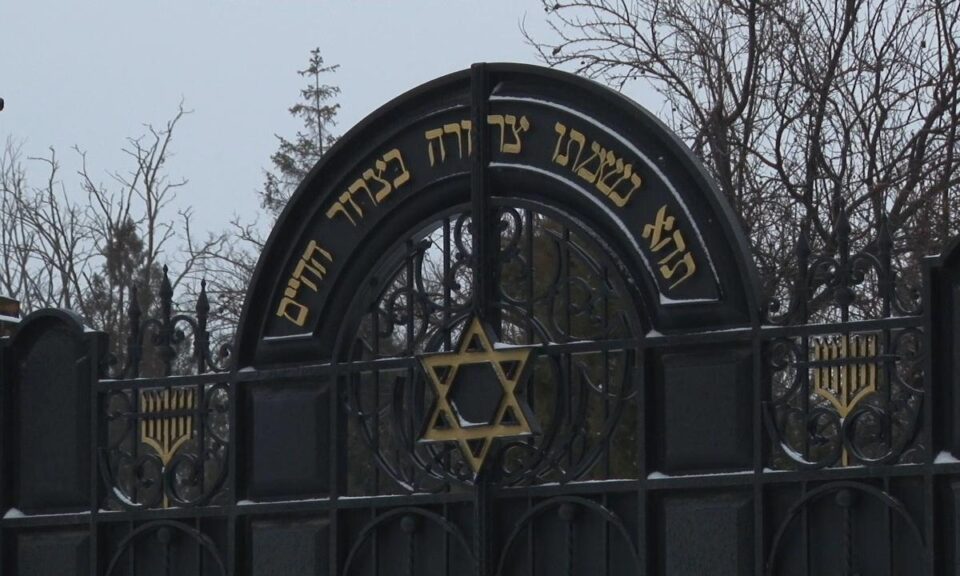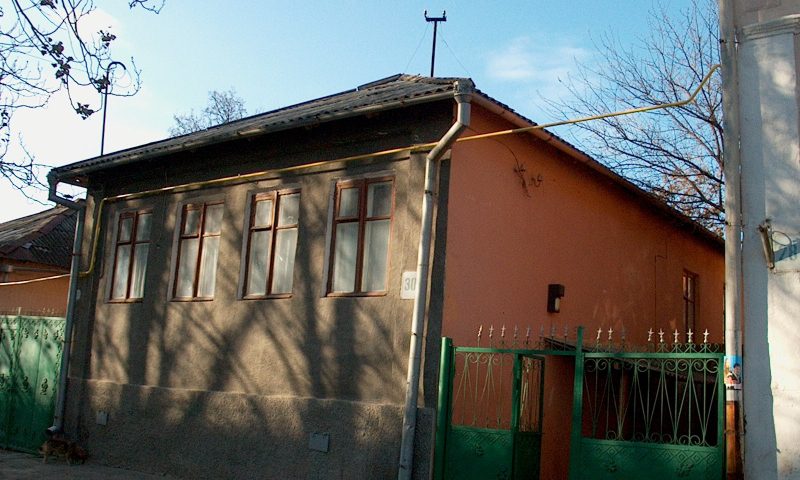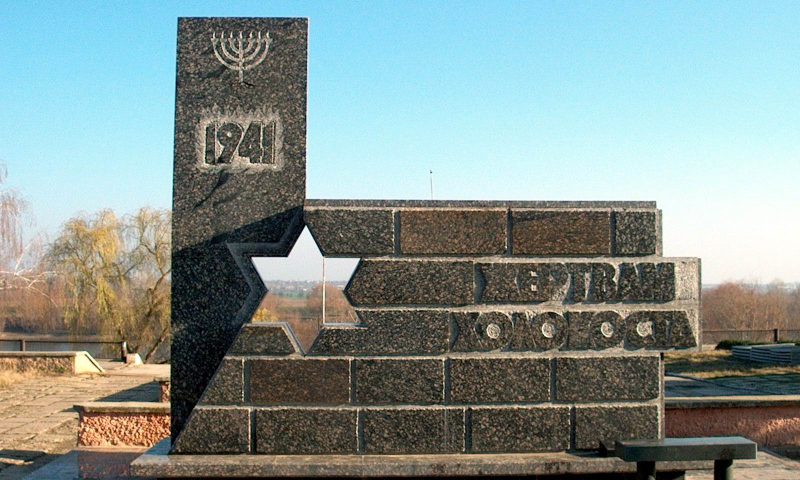In 2002, a memorial to the victims of the Holocaust was erected in Bendery. The opening of the obelisk took place in the Oktyabrsky park, Tkachenko street. Near this place, in August and September 1941, 300 Jews, mostly women and children, were shot. Their bodies were dumped into the Dniester. In 1966, a group of Jewish natives of Bendery came from Israel and proposed to the city council that a monument to the victims of the Holocaust be erected. The city council refused. In 2002, the then director of “Hesed Joseph”, V. Guryev, with the support of the Bendery Jewish community, “Sokhnut” and the director of the sports school I. Geris, erected a monument. It is an image of a fragment of the Western Wall. Made in black granite. Red blotches are reminiscent of blood drops of the victims. The Star of David and the image of the Menorah are carved in the monument.
On the monument there are inscriptions: 1941 and to the Victims of the Holocaust. Nearby is a stone with the inscription: “Not all victims of fascism were Jews, but all Jews were victims of fascism.” The monument was desecrated in 2008 and 2012. The vandals broke several slabs and a sign with an inscription, a swastika and anti-Semitic inscriptions were painted on the monument. There were three main places of execution of Jews in Bendery during the occupation in 1941-1944.
The cemetery is active and located in the southern part of the town. The area is 35 thousand square meters. Currently, it has more than 5,000 graves. It has metal gates and stone fence. The earliest graves and monuments date back to 1909. In 1997, a complete list of burials was compiled. In the 21st century, it was transferred to an electronic version. The cemetery is divided into 6 quarters. Local Jews regularly clean it up. This keeps it in good condition. Most of the inscriptions on the monuments are in Russian. There are inscriptions in Hebrew and Russian in old burials. About 800 inscriptions are unreadable.
The first Jewish burials were carried out on the territory of the fortress settlement.
The synagogue is located at 30 Suvorov Street. It was built in 1812. The building is two-story. There is a small courtyard. In 1989, it was returned to the Jewish community.
Initially, according to the laws of the Russian Empire, it was considered a prayer house. At the beginning of the 20th century, it became a synagogue. In 1940 the building was nationalized by the Soviet authorities. After the war, the building was supposed to be used as a warehouse for storing pig carcasses. The Jews of Bendery managed to defend it and achieve its conversion into a dwelling. In 2009, the building was attacked. Currently in disrepair. However, there are meetings of religious Jews of the city. There are Torah scrolls in the synagogue.
In 2002, a memorial to the victims of the Holocaust was erected in Bendery. The opening of the obelisk took place in the Oktyabrsky park, Tkachenko street. Near this place, in August and September 1941, 300 Jews, mostly women and children, were shot. Their bodies were dumped into the Dniester. In 1966, a group of Jewish natives of Bendery came from Israel and proposed to the city council that a monument to the victims of the Holocaust be erected. The city council refused. In 2002, the then director of “Hesed Joseph”, V. Guryev, with the support of the Bendery Jewish community, “Sokhnut” and the director of the sports school I. Geris, erected a monument. It is an image of a fragment of the Western Wall.
After the war, the Hasidic synagogue “Sadigurer Kloyz” worked in Bendery. It was located next to the modern synagogue, at 28 Suvorov Street. It was built in 1814 as a prayer house. It belonged to the community of the Sadigur Hasidic movement.
At the end of the 19th century, “Sadigurer Kloyz” received the status of a synagogue. During World War II, after the capture of Bendery by Romanian and German troops, there was a stable. After the war, it was restored at the expense of local Jews. In the late 50s, as part of an anti-Semitic campaign, the building was nationalized. A boxing school was opened here. Attempts to return the building to the community were unsuccessful. In 1989, after the Jewish community of the town was registered, the former synagogue was transferred to it.




